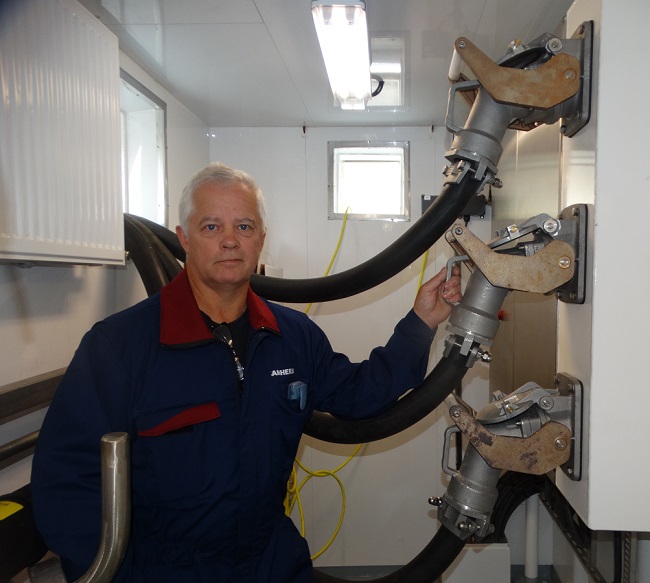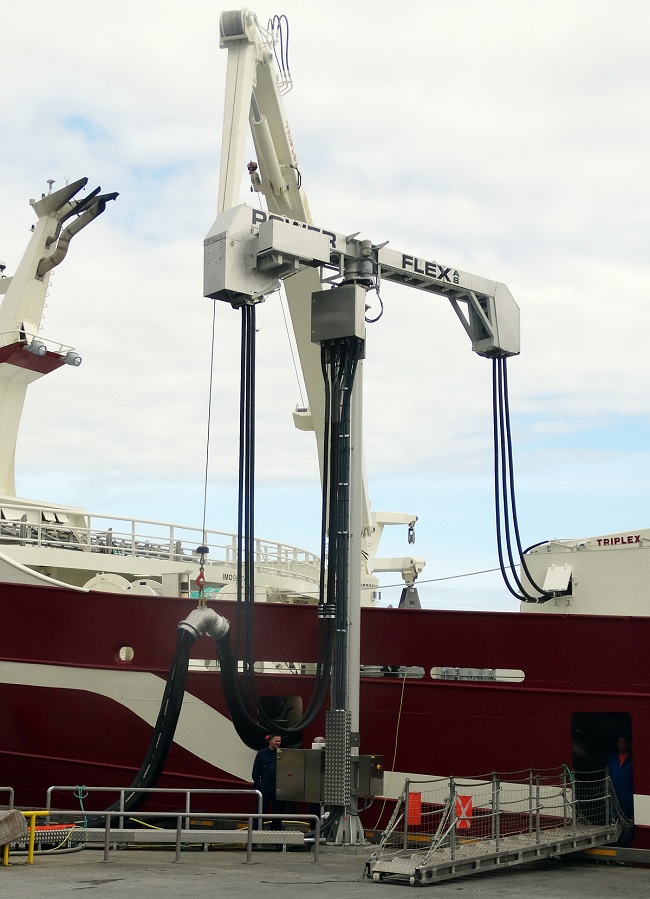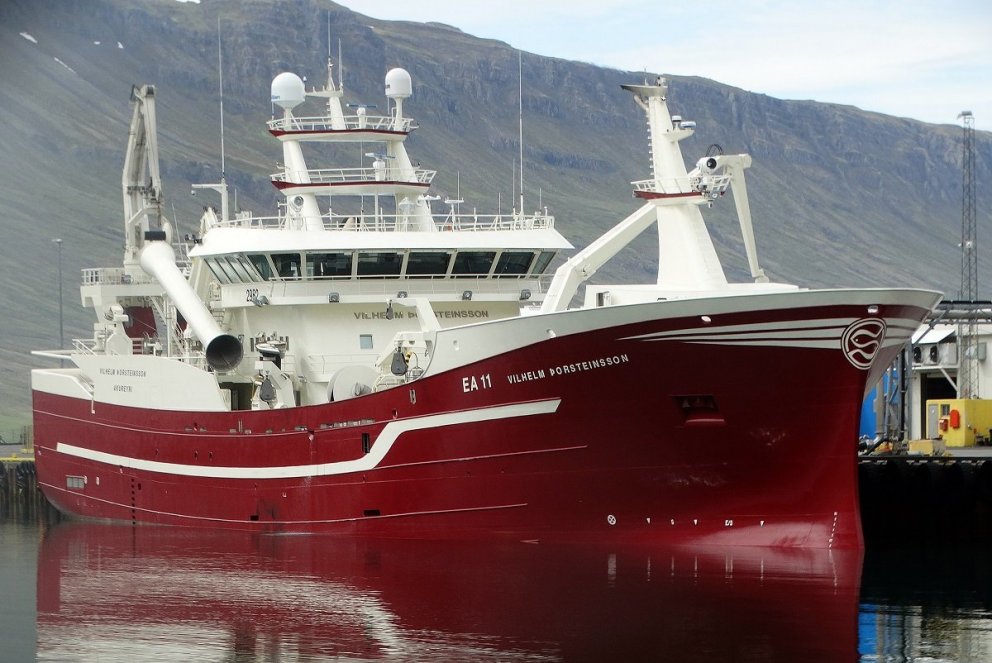The new electricity connection is a positive step for the environment
Vilhelm Thorsteinsson EA 11, Samherji's new pelagic vessel, arrived in Neskaupstadur last week to offload about 850 tonnes of mackerel at Síldarvinnslan's processing plant. This landing marks a positive milestone; an electric connection was used for the first time to connect ships while they land raw materials in the fish processing plant. Furthermore, it is estimated that the oil consumption of ships will decrease by 300 thousand litres per year due to the use of this new equipment. The cost of the project is over a hundred million ISK.
Thorarinn Thorarinsson, the chief engineer on the vessel, says that it usually takes about two days to offload the ship. Meanwhile, the ship's light engines are run to keep the raw material cool, with the consequence oil consumption.

Neskaupstadur is green
"An important green step is being taken with this electrical connection equipment, as we no longer need to burn oil when landing. This reduces oil consumption and is therefore very positive for the environment. Here in the East of Iceland, important green steps have been taken in the fishing industry. For example, the fishmeal factory has been electrified, and ships have been replaced for new and more economical vessels. Neskaupstadur is clearly one of the most environmentally friendly places we know of in the fisheries industry. The operations of Síldarvinnslan reflect that," says Thorarinsson, chief engineer on Vilhelm Thorsteinsson EA.

We need to be vigilant over the energy exchange
Gunnthor B. Ingvason, CEO of Síldarvinnslan, is quoted on the company´s website saying that this is a significant milestone.
"This is a significant and positive step in the energy upgrade of the Icelandic fishing industry. It has taken us several years to develop this project and prepare. We are moving from oil to electricity for cooling and pumping raw material and powering a ship during landing. Síldarvinnslan's policy is to minimize the environmental impact or footprint of its operations. Therefore, we have to be vigilant over energy exchange in the fleet, and we need to assess the feasibility of various new solutions emerging," says Ingvason.


